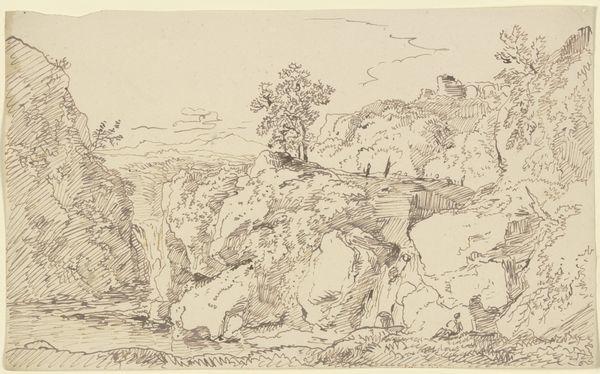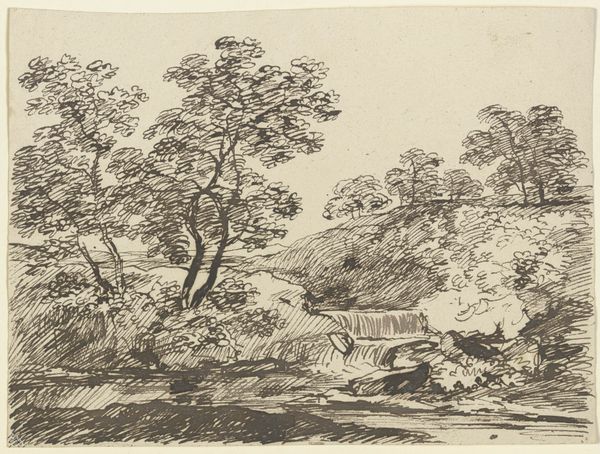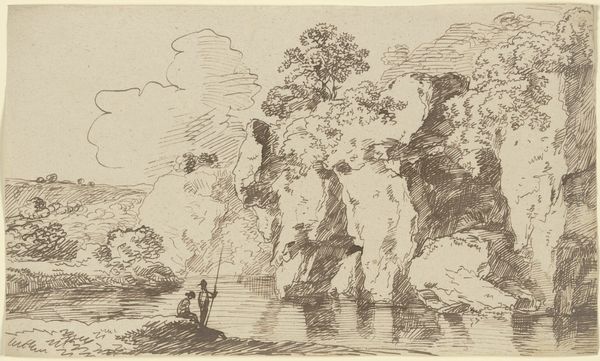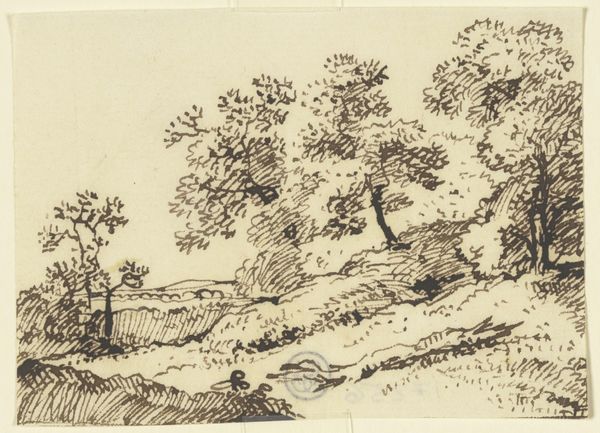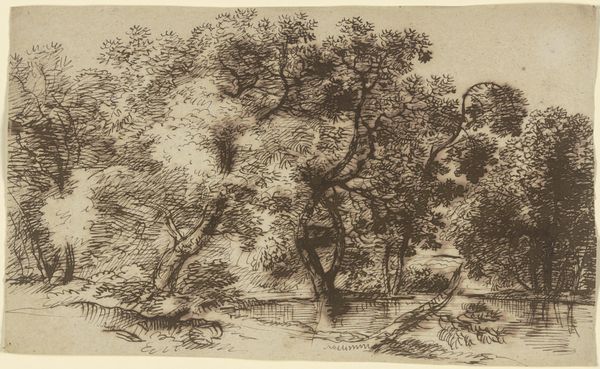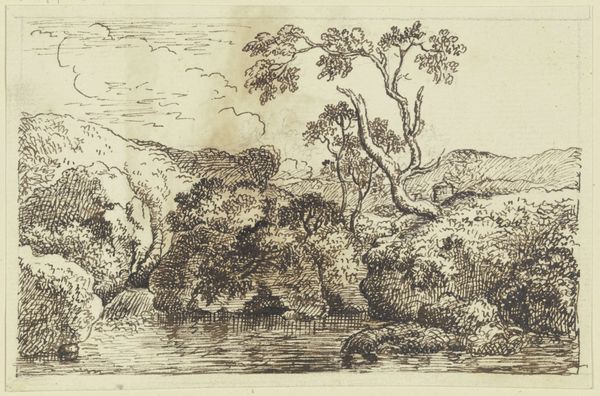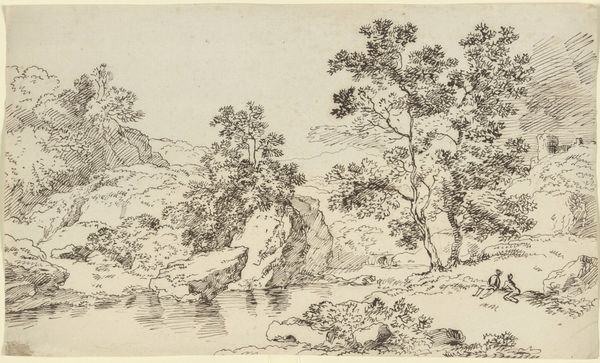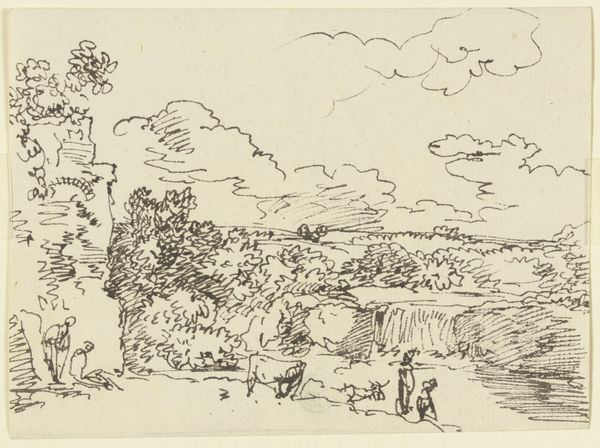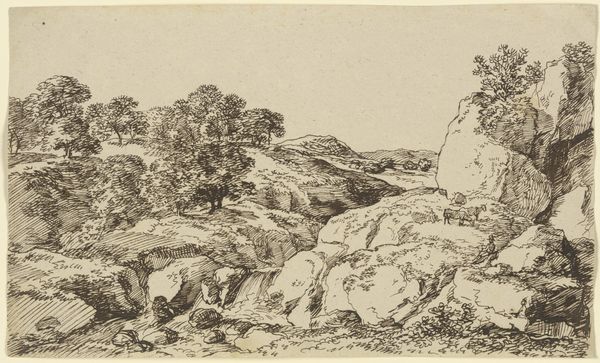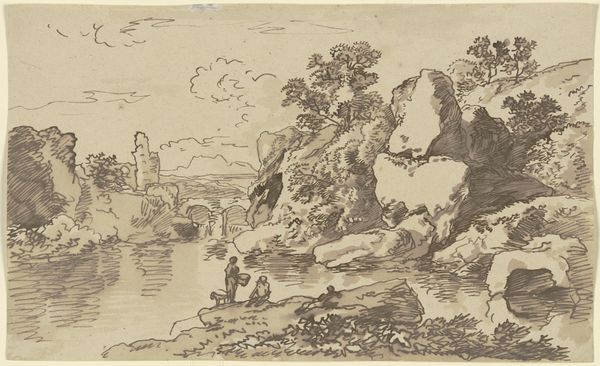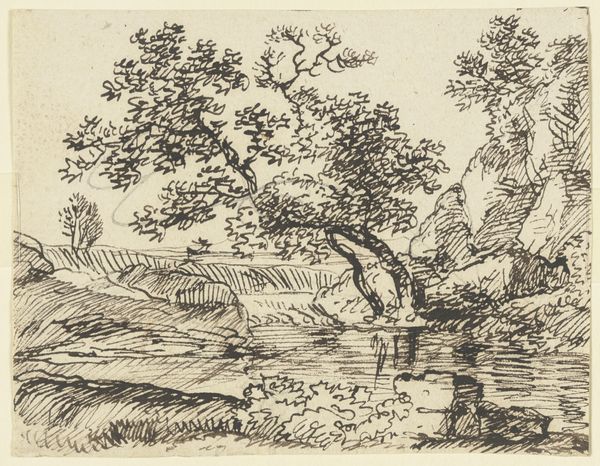
Dimensions: sheet: 5 7/8 x 10 5/8 in. (15 x 27 cm)
Copyright: Public Domain
Curator: This is "Rocky Landscape with a Lake," a drawing by Franz Kobell, made sometime between 1749 and 1822. It’s currently held at the Metropolitan Museum of Art. Editor: My first thought? This feels like a scene pulled straight from a fairytale, or maybe even the backdrop for some intense existential pondering. I mean, just look at that lake shimmering amidst the rugged rocks and scraggly trees—totally evokes that “lost in nature” vibe. Curator: It’s fascinating how Kobell employs such a stark palette to convey the sublime. Think about how the Romantic movement used nature to explore ideas of the human condition; this resonates with that. It also fits into discussions surrounding landscape art, property, and power— who has access to this landscape, and how is that determined? Editor: Power, eh? I'm seeing that differently. It's like a secret garden that only the truly observant or the deeply lost would stumble upon. Those dark, scratchy ink lines feel raw, immediate, almost like he’s channeling the wildness of the landscape directly onto the paper. Curator: The artist's mark-making is also very important here. Pen and ink offer an immediate means for expressing fleeting encounters with the natural world; these 'plein-air' sketches offered the opportunity for intimate observations which could be later used as the groundwork for studio paintings. The composition directs the eye to wonder; notice how your gaze shifts from dark crevasses in the rocks up to the expansive sky? Editor: You're so right. It’s funny— initially, it felt claustrophobic. Like, "get me out of these rocks!" But, when you just let yourself fall into those tiny pen strokes, the piece takes on this spacious quality. Did you notice the little figures, almost lost within all those bushes on the bottom right? What are they even doing there? Are they lost? Or escaping? Curator: Those small details serve as a reminder that humans are always a part of these environmental narratives, even when they appear insignificant. From the vantage point of current discourse, these environmental relationships of the past still echo in society now, through issues around access, labour, race, and migration. Editor: I love that we can look at an 18th-century ink sketch and have it reflect back to us what is currently happening! Art, history, everything is interconnected! It's sort of mind-blowing. Curator: Precisely. And maybe that's what Kobell wanted all along. Editor: Yeah... perhaps his intention was to subtly mess with our heads hundreds of years into the future. I am fully onboard with that mission!
Comments
No comments
Be the first to comment and join the conversation on the ultimate creative platform.
